The Yucatán Peninsula is home to some of the most beautiful, well preserved Mayan ruins. The Mesoamerican civilization built temples, pyramids and ceremonial sites that are still in great condition–even after thousands of years! The Mayans covered a lot of territory throughout their prime (250 – 900 AD) which spanned across Mexico, Belize, Guatemala and Honduras. When visiting the Yucatán Peninsula it’s a must-do to learn interesting facts about the civilization and explore the amazing Mayan ruins.
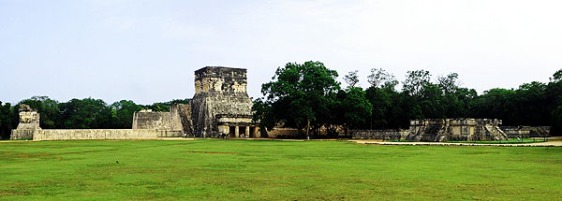 Chichén Itzá
Chichén Itzá
The most important city during the Mayan culture also happens to be the most popular site for tourists to visit. A UNESCO World Heritage Site, Chichén Itzá is only a 45 minute drive from Valladolid. Tours from Cancun as well as cruise passengers docked in Progreso bring thousands of visitors daily. If you want to experience the full grandeur of this ancient city it is best to beat the masses by arriving early, around 8 a.m. Not only does that guarantee the picture perfect photo, but you also avoid the fairly aggressive souvenir vendors that are selling souvenirs throughout the site during the day. If you arrive early morning, when the gates to Chitchén Itza open, you arrive at the same time, the vendors are allowed in. At that point, they haven’t had the time to setup yet, meaning you can roam freely without being interrupted. Also, we found it really interesting to watch them setup and see how they were organized. In order to avoid having to get up at 4 a.m. you will want to stay in the area. There are good options in Valladolid as well as Izamal, and some touristy hotels, right by the site.
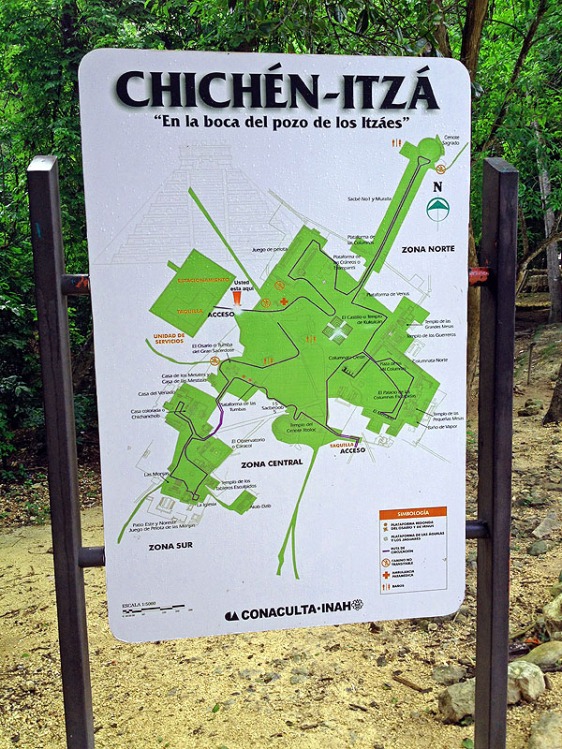 Kukulkan’s Pyramid is the best-known construction on site. The square-based, stepped pyramid is about 75 ft tall and served for astronomical purposes. During the vernal equinox (March 20) and the autumnal equinox (September 21) around 3 p.m. the sun hits the western balustrade on the main stairway. Seven isosceles triangles form, which imitates a 37 ft long body of a serpent that creeps to join the serpent head carved at the bottom of the staircase.
Kukulkan’s Pyramid is the best-known construction on site. The square-based, stepped pyramid is about 75 ft tall and served for astronomical purposes. During the vernal equinox (March 20) and the autumnal equinox (September 21) around 3 p.m. the sun hits the western balustrade on the main stairway. Seven isosceles triangles form, which imitates a 37 ft long body of a serpent that creeps to join the serpent head carved at the bottom of the staircase.
Other buildings on site includes the Great Ball Court, where the Mayas played “Juego de Pelota,” The Temple of the Warriors, The Cenote Sagrado, which was used to perform sacrifices, and El Caracol, a rare round building which is believed to be used for astronomical purposes.
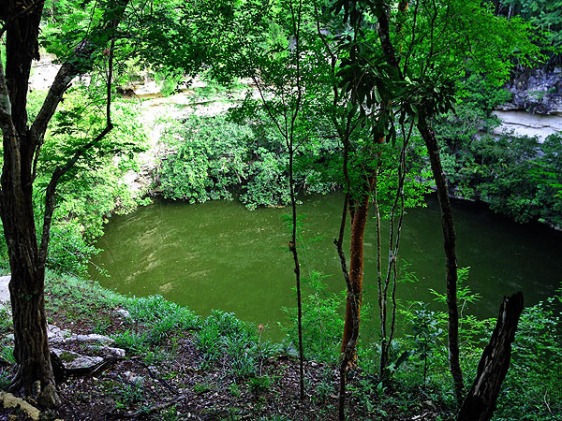 Open daily and the entrance fee is about 10 USD. For more detailed information and opening hours refer to the official site. Because this site is so popular and large, it is best to stay nearby so you can really explore and see all the buildings rather than rush. Keep in mind: is it a very hot and sunny location, so make sure to bring lots of water, wear a hat and pack sunscreen!
Open daily and the entrance fee is about 10 USD. For more detailed information and opening hours refer to the official site. Because this site is so popular and large, it is best to stay nearby so you can really explore and see all the buildings rather than rush. Keep in mind: is it a very hot and sunny location, so make sure to bring lots of water, wear a hat and pack sunscreen!
Dzibilchaltun
Pronounced “Ts’iibil Cháaltun,” it is a smaller ruins site located about 10 miles north of Mérida. It is extremely north of the Maya Region and not too far from the Gulf of Mexico. Dzibilchaltun was the longest functioning city in the Mayan World and had a peak population of 20,000, though it declided with the rise of Chitchén Itzá.
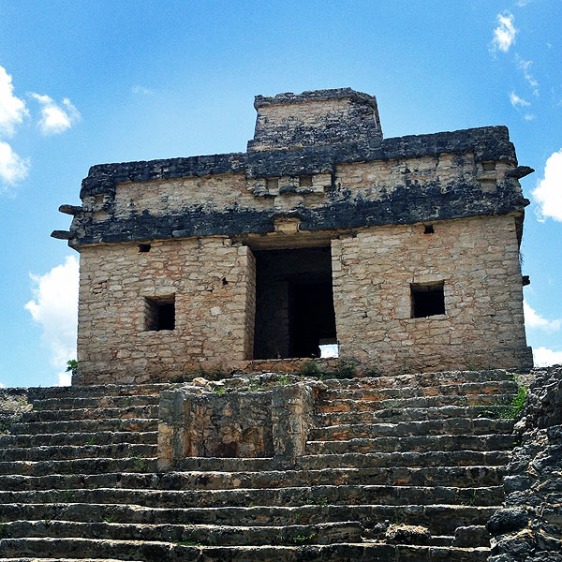 The most famous attraction is the Templo de las Siete Muñecas (Temple of the Seven Dolls), aptly named for the seven dolls that are located inside. The temple was discovered in the 1950s under the ruins of another larger temple–building temples over top each other was common practice with the Maya. The dolls were found in the smaller temple, but now are located in the museum. During the spring and fall equinoxes, a spectacular feature happens at the temple: the doorways were created to capture light of the rising sun on those days and as the sun rises, it is visible directly through one door of the temple to the other. On these days the site opens at 5:30 a.m. so visitors can experience this phenomenon.
The most famous attraction is the Templo de las Siete Muñecas (Temple of the Seven Dolls), aptly named for the seven dolls that are located inside. The temple was discovered in the 1950s under the ruins of another larger temple–building temples over top each other was common practice with the Maya. The dolls were found in the smaller temple, but now are located in the museum. During the spring and fall equinoxes, a spectacular feature happens at the temple: the doorways were created to capture light of the rising sun on those days and as the sun rises, it is visible directly through one door of the temple to the other. On these days the site opens at 5:30 a.m. so visitors can experience this phenomenon.
 The park site is open regularly from 8 a.m. to 5 p.m. while museum hours are 8 a.m. to 4 p.m. There is a small entrance fee, but that allows you entrance to the ruins and grounds, museum, cenote (swimming) and the church. There is also a restaurant on site, gift shop, parking, handicapped facilities and restrooms.
The park site is open regularly from 8 a.m. to 5 p.m. while museum hours are 8 a.m. to 4 p.m. There is a small entrance fee, but that allows you entrance to the ruins and grounds, museum, cenote (swimming) and the church. There is also a restaurant on site, gift shop, parking, handicapped facilities and restrooms.
Ek Balam and Temozon
About an hour from the Cancun airport, Ek Balam was abandoned by the Mayans and the jungle has now engulfed the ruins. After some restoration it is now a tourist attraction when visiting the Yucatán. Ek Balam is a more natural site to see the Mayan Ruins and not overrun with tourist like Chichén Itzá. Also, you are free to roam and can climb all the structures.
The Acropolis is the largest restored building standing at 104 feet tall. Make sure to bring a pair of sneakers if you want to climb up the steps! On the way up, you can see the entrance that resembles the mouth of a monster. There are lots of sculptures of humans and animals as well, so make sure to pay close attention to detail. 
The view from the top is absolutely stunning, you can see all of the Yucatec horizon.
 Other buildings on the site include the Palace, which has six different levels and it’s thought where the governors and upper class lived. There’s also the ball court and observatory. The site is open from 8 a.m. to 5 p.m. daily and there is a 122 pesos entrance fee for foreigners. There’s one washroom on site, but no place to buy refreshments, so make sure to pack a lunch!
Other buildings on the site include the Palace, which has six different levels and it’s thought where the governors and upper class lived. There’s also the ball court and observatory. The site is open from 8 a.m. to 5 p.m. daily and there is a 122 pesos entrance fee for foreigners. There’s one washroom on site, but no place to buy refreshments, so make sure to pack a lunch!
When visiting Ek Balam make sure to also visit the close by Cenote. X’Canche. The sacred waterhole is located about a mile from the Ek Balam site and you can either walk or rent a bike to get there. Bike rental cost is negotiable. We found ourselves all on our own, swimming in the sacred waterhole surrounded by little black fish and a very mythical setting.
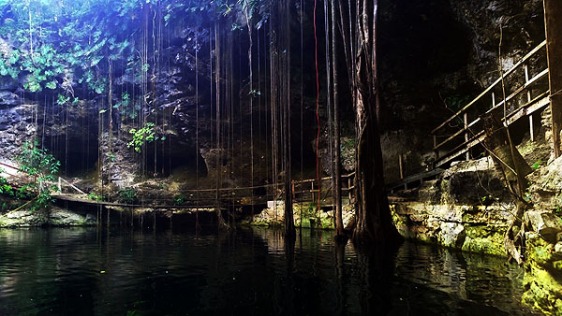 The Ek Balam site is not very developed so you won’t find a restaurant there. However, this works out in your favor because you should absolutely take the time to stop in nearby Temozon and try some of their famous smoked meat.
The Ek Balam site is not very developed so you won’t find a restaurant there. However, this works out in your favor because you should absolutely take the time to stop in nearby Temozon and try some of their famous smoked meat.
Temozon is located on the Timizin highway, between Valladolid and Ek Balam. They are famous for their traditional carne ahumada recipe–or to us, smoked meat–it’s a stop you can’t afford to miss!
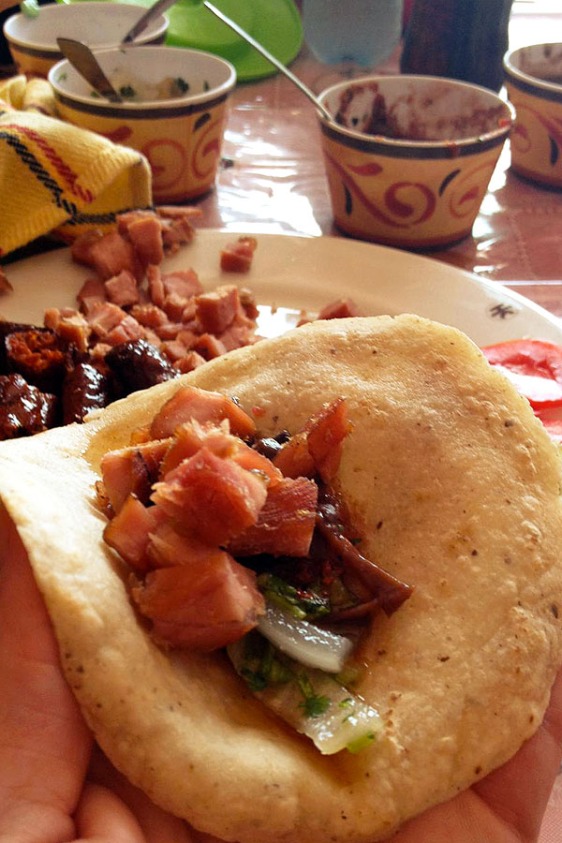 If you decide to venture off the beaten path and visit those less touristy sites make sure to carry some Mexican pesos as using foreign money or credit cards gets harder. If you plan on renting a car to explore the reason check out our El Mundo Maya post for additional information and tips.
If you decide to venture off the beaten path and visit those less touristy sites make sure to carry some Mexican pesos as using foreign money or credit cards gets harder. If you plan on renting a car to explore the reason check out our El Mundo Maya post for additional information and tips.
If you are intrigued by the Yucatán and want to see more pictures, check out our Facebook page!
STEFANIE PICHONNAT
Stefanie Pichonnat is the Yucatan Peninsula Specialist at Cumar Gold Travel, a boutique travel firm specialized in creating and customizing personalized travel itineraries. You can contact her at stefanie@aav-travel.com
She co-wrote the article with
STEPHANIE JELLETT
Stephanie Jellett is interning as a travel writer and social media manager at AAV Travel. You can contact her at stephanie.jellett@maine.edu

